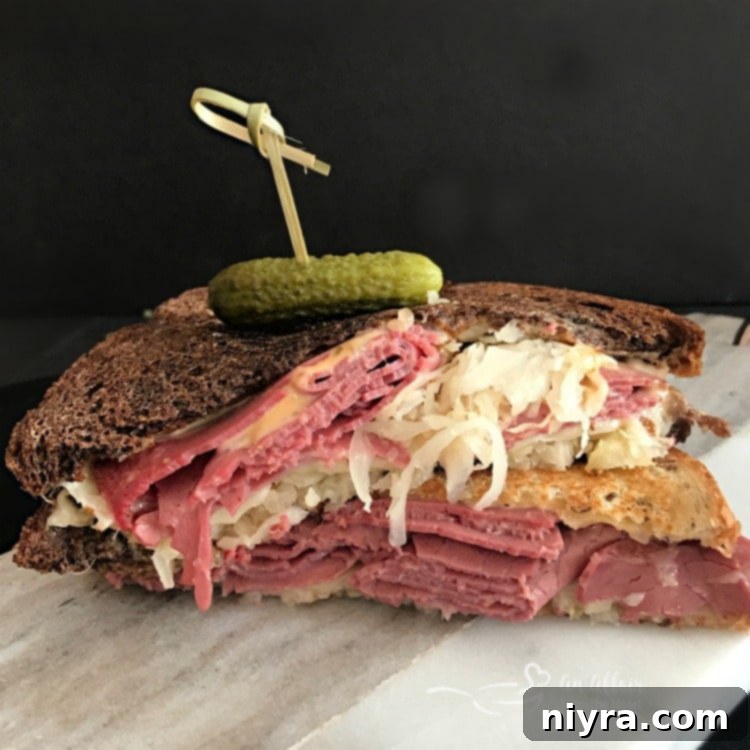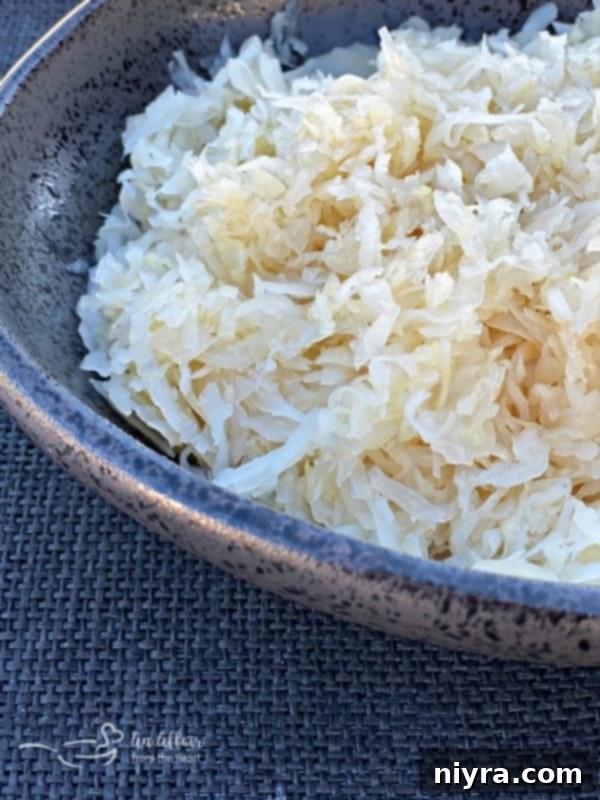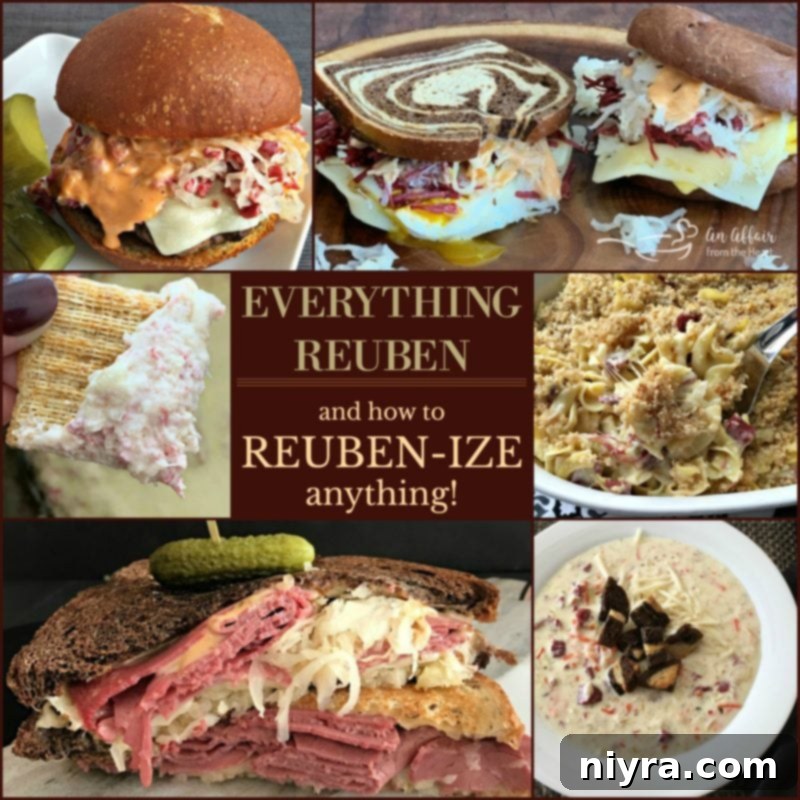The Reuben Sandwich: A Culinary Legend with a Spirited Origin Story

Like many iconic culinary creations and legendary figures, the Reuben sandwich boasts a captivating origin story – or, more accurately, a couple of highly debated tales. This beloved grilled sandwich, a harmonious blend of savory and tangy flavors, has sparked passionate arguments across the United States about its true birthplace. While some staunchly defend its New York City deli roots, others, particularly those from Omaha, Nebraska, present an equally compelling narrative. What’s undisputed, however, is the Reuben’s enduring appeal and its status as a quintessential American comfort food, a testament to its perfectly balanced ingredients that combine to create something truly exceptional.
Many initially assume the Reuben originated in the bustling Jewish delis of New York City, a hub of sandwich innovation. While this theory holds historical weight, it’s quickly countered by a simple truth: the classic Reuben, with its combination of meat and cheese, isn’t traditionally Kosher. This fact often leads to a re-evaluation of its supposed New York genesis. For residents of Omaha, the local legend is not only preferred but also paints a more vivid and charming picture of its creation. Regardless of which story you favor, the classic Reuben remains a masterpiece of taste: generous layers of tender corned beef, a mound of tangy sauerkraut, creamy Swiss cheese, and a slather of Thousand Island dressing, all grilled to perfection between two slices of hearty rye bread. It’s a symphony of textures and flavors that has captivated palates for generations.

The Intriguing Origin Stories of the Reuben Sandwich
The quest for the Reuben’s true origin often leads to two distinct, equally passionate claims. Understanding both narratives enriches our appreciation for this iconic sandwich and highlights its significant cultural impact.
Omaha’s Claim to Fame: The Kulakofsky Legend
In Omaha, Nebraska, a specific day is even dedicated to commemorating the invention of the Reuben sandwich – Reuben Day. The local legend credits a Jewish Lithuanian-born grocer named Reuben Kulakofsky. The story goes that Kulakofsky was a regular participant in a weekly poker game held at the prestigious Blackstone Hotel in Omaha, a tradition that spanned from 1920 to 1935. This close-knit group of players affectionately referred to themselves as “The Committee.” One evening, during a particularly long game, Kulakofsky requested a special sandwich. He asked the hotel’s owner, Charles Schimmel, who was also a member of “The Committee,” to create a sandwich featuring corned beef and sauerkraut. The hotel’s chef, Bernard Schimmel (Charles’s son), then added Swiss cheese and a special dressing, grilling it all on rye bread. The resulting creation was an instant hit among the poker players.
The Committee loved this unique sandwich so much that they implored Charles Schimmel to add it to the Blackstone Hotel’s lunch menu. Schimmel, recognizing a winning hand, obliged, and the Reuben sandwich officially made its debut. Thus, Reuben Kulakofsky not only got his hunger satisfied but also had a legendary sandwich and a commemorative day named after him. This tale resonates deeply in Omaha, embodying a spirit of camaraderie and culinary innovation born out of a simple request during a late-night card game. It’s a compelling narrative that has been championed by food historians and locals alike, solidifying Omaha’s place in the Reuben’s rich history.
New York’s Counter-Claim: Arnold Reuben’s Delicatessen
Across the country, in the bustling heart of New New York City, another equally persistent origin story attributes the sandwich to Arnold Reuben, the proprietor of Reuben’s Delicatessen. This popular establishment, which first opened in 1908, was known for its inventive and towering sandwiches. According to this account, the Reuben sandwich was first created by Arnold Reuben himself in 1914. One story suggests that a theatrical actress, Annette Seelos, came into his deli late one night and requested a substantial sandwich. Reuben supposedly piled corned beef, Swiss cheese, sauerkraut, and Russian dressing onto rye bread, naming it after her. Another version of the New York story involves a hungry newspaper reporter named Reuben who asked for a hearty sandwich.
While the New York story might seem more geographically fitting for a deli sandwich, the key contention, as mentioned earlier, is the inclusion of cheese with meat, which would traditionally make it non-Kosher. This has often been used by proponents of the Omaha story to cast doubt on the New York claim. Nevertheless, Reuben’s Delicatessen was indeed famous for its “Reuben Special,” leading many to believe that the sandwich, or at least a very similar precursor, originated there. The New York narrative has historically been the more widely accepted one, largely due to the city’s reputation as a mecca for deli cuisine. Regardless of who created it first, both stories highlight the American love affair with hearty, flavorful sandwiches and the serendipitous nature of culinary invention.
The Anatomy of a Legend: Unpacking the Classic Reuben Ingredients
No matter which origin story resonates most with you, one thing is universally agreed upon: the classic Reuben sandwich is a masterpiece of flavors and textures. It’s a testament to the idea that simple, high-quality ingredients, when expertly combined, can create an unforgettable culinary experience. At its heart, the Reuben is a celebration of contrasting yet complementary elements, each with its own rich history and unique contribution to the sandwich’s iconic taste.
A Global Melting Pot in a Sandwich
It’s fascinating to consider that while the Reuben is celebrated as a distinctly American sandwich, its core ingredients boast roots from various corners of the globe. This multicultural heritage makes the Reuben a true “melting pot” of culinary arts, reflecting the diverse influences that have shaped American cuisine. The nutty Swiss cheese, the tangy Eastern European rye bread, the ancient meat preservation technique of corned beef, and the even older tradition of sauerkraut all converge in this single, delicious creation. This global amalgamation truly makes the Reuben a uniquely American experience.
What is Corned Beef? The Heart of the Reuben
Corned beef, the undeniable star of the Reuben, is essentially beef that has been preserved and flavored through a brining process using a salt solution. The term “corned” refers to the large grains of rock salt, or “corns” of salt, traditionally used in this curing process, which are roughly the size of corn kernels. This method of preservation dates back centuries, long before refrigeration, making it a crucial technique for ensuring meat lasted through lean times.
While many associate corned beef with St. Patrick’s Day, its popularity among Irish Americans has a nuanced history. In medieval Ireland, most of the corned beef produced was exported. When Irish immigrants arrived in America, they found beef to be more affordable than pork, a staple in their homeland. They adapted their traditional Irish bacon and cabbage dish, swapping bacon for the more accessible corned beef, creating the beloved Irish-American tradition we know today. This adoption was also influenced by Jewish delicatessens, which popularized cured meats like corned beef, making it readily available.
It’s also common to confuse corned beef with pastrami, and while they are similar, there are distinct differences. Both are cured meats, but pastrami typically undergoes an additional smoking process, giving it a deeper, smokier flavor profile and a texture that can resemble “beef bacon.” Pastrami is often made from a different cut, like the navel, similar to how bacon comes from pork belly, and it is heavily spiced before smoking. While corned beef offers a rich, salty, and tender profile, pastrami provides a more robust, peppery, and smoky alternative. That said, there’s no rule against using pastrami in a Reuben for those who prefer its distinctive flavor. The price point might be higher, but the smoky notes add an intriguing new dimension to the classic sandwich.
Sauerkraut: The Tangy Counterpart
Just like corned beef relies on ancient preservation methods, sauerkraut (or simply “kraut”) utilizes fermentation to transform humble cabbage into a vibrant, tangy condiment. This process involves finely shredded cabbage mixed with salt, which draws out moisture and encourages beneficial bacteria to convert sugars into lactic acid. The result is a crisp, sour, and incredibly flavorful ingredient that acts as the perfect foil to the rich, savory corned beef and creamy cheese.
Sauerkraut boasts an incredibly ancient history, believed by many to have originated with the Mongols or in ancient China, where fermented cabbage was consumed by workers building the Great Wall. It then traveled to Europe, becoming a staple in many cuisines, particularly in Germany and Eastern European countries. The tartness of sauerkraut isn’t just for flavor; it also aids in digestion and adds a crucial acidic brightness that cuts through the fattiness of the meat, creating a perfectly balanced bite. The combination of sauerkraut with corned beef is a culinary pairing that has endured for centuries, suggesting a deep-seated appreciation for this flavor harmony that truly feels embedded in our gastronomic DNA. For an even deeper dive into this fascinating ingredient, explore my Ultimate Guide to Sauerkraut!

Selecting the Perfect Swiss Cheese for Your Reuben
A classic Reuben sandwich wouldn’t be complete without a generous layer of perfectly melted Swiss cheese cascading over the warm corned beef and sauerkraut. But “Swiss cheese” is a broad category, encompassing many varieties. Knowing which type works best for a Reuben is key to achieving that ideal balance of flavor and meltability.
For the Reuben, you’ll want to seek out more aged styles of Swiss cheese, as they tend to offer a more pronounced nutty flavor and a firmer texture that melts beautifully without becoming overly greasy. The most popular and iconic type of cheese associated with the label “Swiss” is actually Emmental cheese. Emmental is renowned for its characteristic large holes, known as “eyes,” and its wonderfully nutty, slightly tangy flavor. Its semi-hard consistency ensures it melts evenly, creating a smooth, gooey layer that binds the sandwich together.
The distinctive tang of Swiss Emmental cheese is crucial to the Reuben’s appeal. It harmonizes wonderfully with the briny, savory notes of the corned beef and the sharp sourness of the sauerkraut. What’s truly remarkable about the Reuben is how these strong individual flavors—the tanginess of Swiss cheese, the sourness of sauerkraut, and the saltiness of corned beef—come together in perfect synergy. Ingredients that might be considered too intense on their own become beautifully balanced and mutually enhancing within the context of a Reuben, making any perceived “issues” completely disappear. This careful balance of flavors is what elevates the Reuben from a simple sandwich to a truly exceptional culinary experience.
Exploring the Versatility: Delicious Variations on the Reuben
While the classic Reuben sandwich holds a special place in the hearts of many, its undeniable appeal has inspired a remarkable array of variations, proving its adaptability far beyond the traditional rye bread. These creative interpretations demonstrate that the “Reuben profile” – that perfect blend of savory meat, tangy kraut, melted cheese, and creamy dressing – can be successfully applied to countless dishes, even those that don’t involve beef!
For instance, some regions have embraced seafood Reubens. In Florida, a grouper Reuben is a popular menu item, offering a lighter, flaky alternative to corned beef while retaining the essential flavors. Similarly, in states like Minnesota and Ohio, you might find a walleye Reuben, showcasing local fish. These variations typically swap the corned beef for grilled or fried fish, maintaining the Swiss cheese, sauerkraut, and dressing, often on marbled rye.
Another beloved spin is the Montreal-style Reuben, which replaces traditional corned beef with Montreal smoked meat. This distinctively spiced and smoked brisket offers a richer, more complex flavor profile, adding a new dimension to the classic sandwich.
Perhaps the most famous variation is the “Rachel” sandwich. The Rachel is essentially a Reuben in disguise, substituting pastrami for corned beef and creamy coleslaw for sauerkraut. This swap creates a slightly sweeter, less tangy, yet equally satisfying sandwich, appealing to those who prefer coleslaw’s crunch and mellowness over sauerkraut’s assertive sourness.
Beyond sandwiches, the “Reubenizing” concept has led to innovative appetizers and main courses. Imagine Reuben egg rolls, crispy wrappers filled with all the classic ingredients, or the delightful Reuben wonton purses, miniature bites of savory goodness. Salads also get the Reuben treatment, with the core ingredients deconstructed and tossed into a fresh greens mix, often with rye croutons and a drizzle of Thousand Island dressing. Even vegetarian versions have emerged, cleverly replacing meat with layers of crisp cucumbers, roasted vegetables, or plant-based deli slices, paired with sauerkraut, Swiss cheese (or a vegan alternative), and dressing, ensuring everyone can enjoy the irresistible flavors of a Reuben.
Clearly, the classic Reuben sandwich is more than just a meal; it’s a culinary muse, inspiring countless delicious variations that continue to delight and surprise palates across the globe.
Thousand Island vs. Russian Dressing: The Great Reuben Debate
One of the most enduring debates in the world of the Reuben sandwich centers on its signature dressing: should it be Thousand Island or Russian dressing? Purists often argue that the sandwich is “traditionally” served with Russian dressing, though who “they” are is often a mystery, as for many, Thousand Island has always been the standard choice. The truth is, both dressings are remarkably similar in their creamy, tangy, and slightly sweet profiles, and either one generously slathered onto grilled rye bread will undoubtedly result in a delicious Reuben.
Russian dressing, despite its name, has no real connection to Russia. It’s a classic American condiment typically made with mayonnaise, ketchup or chili sauce, relish (often horseradish or dill), and a touch of spice like hot sauce or Worcestershire. Its flavor tends to be a bit spicier and less sweet than Thousand Island, with a more pronounced savory depth. It’s incredibly easy to whip up at home, requiring just a few common pantry ingredients, or it can be purchased bottled. Interestingly, if you were to ask a Russian person what they call this condiment, you’d likely hear “ketchunnaise” – a portmanteau of ketchup and mayonnaise!
On the other hand, Thousand Island dressing, which many (including myself) consider the quintessential Reuben dressing, generally offers a sweeter and slightly milder flavor profile. While it shares mayonnaise and ketchup as base ingredients with Russian dressing, Thousand Island distinguishes itself with the addition of finely chopped hard-boiled eggs, sweet pickle relish, and sometimes finely minced olives or pimentos. This combination gives it a unique texture and a more nuanced sweetness that many find perfectly complements the salty corned beef and sour sauerkraut. While store-bought Thousand Island is convenient, making your own Homemade Thousand Island Dressing is a simple process that yields vastly superior flavor and freshness, making it a worthwhile endeavor for any Reuben aficionado.
Rocking the Rye: The Foundation of a Great Reuben
The choice of bread is paramount to a truly exceptional Reuben, and rye bread stands as the undisputed champion. Its distinct herbal and savory notes, often enhanced by caraway seeds, are not merely an afterthought; they are an integral component that elevates the entire sandwich experience. The unique flavor of rye bread, with its slight sourness and earthy undertones, creates the perfect canvas for the rich and tangy fillings.
When selecting rye bread for your Reuben, you have options – from lighter varieties to darker pumpernickel-style rye, and even marbled rye, which combines light and dark doughs for visual appeal and a blend of flavors. More critical than the color, however, is the bread’s texture and density. A great Reuben requires a bread that is substantial enough to stand up to the moisture and weight of the generously piled corned beef, juicy sauerkraut, melted cheese, and creamy dressing. Thin, flimsy bread will quickly become soggy, leading to a structural failure and a less enjoyable eating experience. Look for a dense, firm loaf that can be sliced thickly and toasted or grilled to a golden crisp, creating a robust framework that holds every delicious component in place. This sturdy foundation ensures that each bite delivers the full, uncompromised symphony of Reuben flavors and textures.
Let’s Reubenize! A Culinary Movement
My profound love for the Reuben sandwich has inspired a culinary movement I affectionately call “Reubenizing.” This concept involves taking the iconic flavor profile of the Reuben – that irresistible combination of corned beef, Swiss cheese, sauerkraut, and creamy dressing – and ingeniously incorporating it into a myriad of other dishes. It’s about reimagining and transforming everyday meals and appetizers with that unmistakable Reuben zest, creating dishes you might never have dreamed possible. I’m so passionate about this idea that I’m petitioning for “Reubenize” to become an official dictionary term – feel free to join me in this delightful culinary crusade!
I’ve developed numerous “Reubenized” recipes, and I’m constantly adding more to my collection. I encourage you to visit often to discover new ways to enjoy these fantastic flavors. Now, let’s dive into some of these exciting recipes!
Traditional and Not-So-Traditional Reuben Sandwiches:
- Traditional Reuben Sandwich – Naturally, this collection starts with a faithful recipe for the original masterpiece, ensuring you can craft the classic exactly as it was intended, perfectly grilled and layered.
- Brats Reuben Style – This recipe puts a creative spin on classic brats, infusing them with the familiar Reuben flavors, proving that these hearty sausages can also benefit from a touch of sauerkraut, Swiss, and savory dressing.
- Reuben Burger – A true epicurean delight, this burger is piled high with corned beef, melted Swiss, and sauerkraut, all brought together with a tangy dressing. It’s so juicy and flavorful, you might just need extra napkins!
- Reuben Breakfast Sandwiches – Why confine the Reuben to lunch or dinner? By adding eggs and experimenting with different bases like rye bread, English muffins, or bagels, you can create an amazing egg Reuben that’s perfect for a hearty breakfast or a delightful brunch.
Speaking of breakfast and brunch, who doesn’t love a good quiche? While “they” might say real men don’t eat quiche, that was surely before my husband tasted my Reuben Quiche. I can confidently confirm that real men absolutely LOVE Reuben quiche, especially when it’s packed with those savory Reuben flavors.
Reuben Inspired Appetizers:
- Fabulous Reuben Cheese Balls – Reimagine the sandwich as an elegant, yet incredibly flavorful, appetizer cheese ball. It’s perfect for your next cheese plate or party spread, offering all the Reuben goodness in a bite-sized format.
- Crock Pot Reuben Dip – While on the subject of appetizers, this “fix it and forget it” dip is an absolute crowd-pleaser. Served warm with crispy rye crackers, it perfectly captures the essence of the classic sandwich in a dippable form.
- Reuben Totchos – Prepare for your mind to be blown! This innovative dish takes the Reuben concept and reinvents it as nachos, but instead of tortilla chips, we use crispy tater tots. It’s an explosion of flavors and textures that you have to try to believe.
- Reuben Pinwheels – A fantastic party appetizer, these pinwheels feature the savory Reuben filling encased in flaky puff pastry, rolled up and baked until golden. They’re as delightful to look at as they are to eat.
- Hot Reuben Dip – A rich, cheesy baked dip that perfectly replicates the taste of the sandwich when spread on toasted rye bread or crackers. It’s an irresistible appetizer for any gathering.
- Reuben Wonton Purses – Delicate wonton wrappers are filled with a delightful mix of corned beef, sauerkraut, and Swiss cheese, then baked until crispy and golden. These little parcels of flavor are incredibly addictive.
Main Course Reubenized Meals:
- Cream of Reuben Soup – This incredibly rich and creamy soup is destined to become your new favorite for a rainy day. It’s hearty, comforting, and perfectly captures all the beloved flavors of the sandwich in a bowl.
- Reuben Casserole – If you can create a Reuben-style quiche, then a Reuben casserole is certainly within reach! This comforting bake layers all the classic ingredients into a satisfying dish perfect for a family meal.
- Another Kind of “Za”: Reuben Pizza – Just when you thought there were no more brilliant ways to reimagine the Reuben, I present this fantastic creation. Combining two of the best comfort foods on earth, this pizza offers a unique and incredibly satisfying experience.
- Hot Potatoes: Reuben Stuffed Baked Potatoes – Move beyond the ordinary bacon and sour cream! These generously sized baked potatoes are stuffed with all the delicious components of a Reuben, making for a truly hearty and innovative meal.
I sincerely hope you’re feeling inspired to embark on your own “Reubenizing” adventures! Start with some of my recipes to get a feel for the concept, and then please share any creative variations you come up with. I’m always on the lookout for new and exciting ways to celebrate the infamous Reuben sandwich! 



